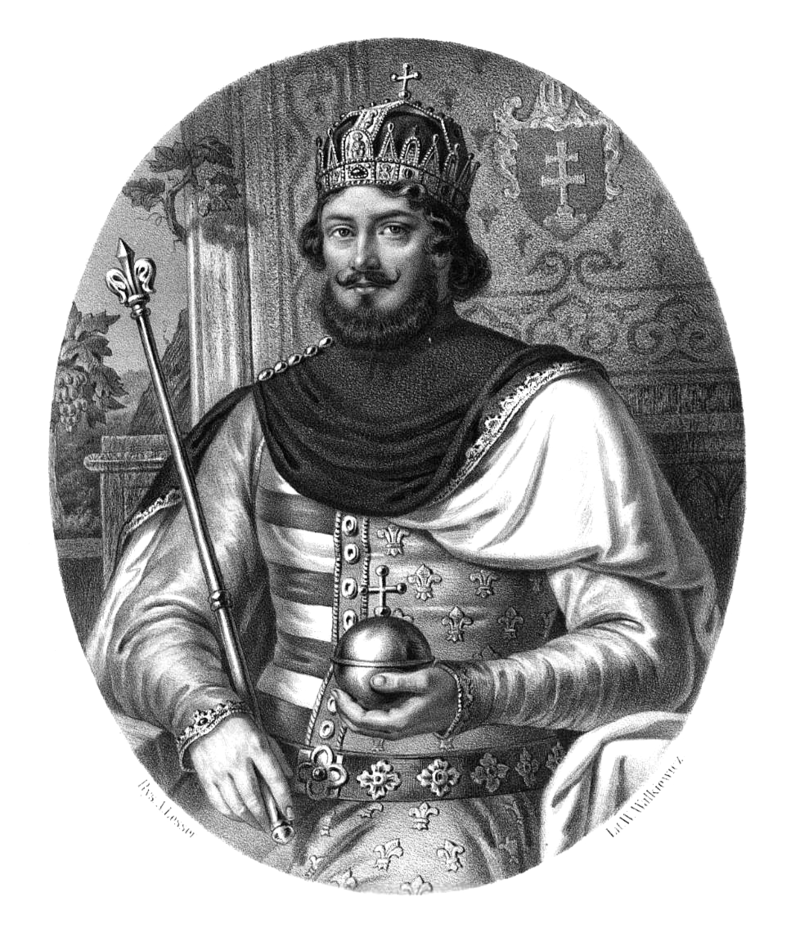
Louis I (the Great), the Hungarian royal prince from the Capeting–Anjou house, was king of Hungary and Croatia from 1342, and of Poland from 1370. During his reign, Hungary reached its largest territorial extent and experienced significant cultural prosperity. Lajos was born on March 5, 1326 in Visegrád, the third son of King Charles I of Hungary and Queen Elizabeth of Łokietek. Before his accession to the throne, he participated in several military campaigns as a young man, during which he gained military and political experience. 1342. succeeded his father, Károly I, on the throne on July 16. During his reign, he took several important foreign and domestic policy steps. In foreign policy, he led several campaigns in Italy and the Balkans, where he brought several areas under Hungary's authority. culture and education also underwent significant development. Buildings, the work of chroniclers and the flourishing of fine arts characterized this era. He reigned in Poland from 1370, after III. After the death of King Kazmér of Poland, he also inherited the Polish throne. Lajos married twice and had a total of two children who lived to adulthood. His first wife was Princess Margit from the House of Luxembourg. Margaret IV. She was the first-born daughter of Charles the Holy Roman Emperor and King of Bohemia and Princess Blanca of France. Their marriage took place in Visegrád around May 1347, when the princess turned 12. However, their relationship did not last long, because the queen died on September 7, 1349, as a result of the plague. Their marriage remained childless. His second wife, raised in the Hungarian royal court in Óbuda, became the Bosnian princess Erzsébet from the Kotromanić house. Elizabeth II István was the only child of Bosnian Ban and Princess Erzsébet of Kujavia. Erzsébet's mother was a close relative of Lajos's mother, both were descendants of the Piast dynasty. The marriage of the two took place on June 20, 1353, in Buda. A total of four daughters were born from their relationship, two of whom lived to adulthood and, although divided, carried on their father's legacy. Their children: Royal Princess Mary the Elder (1365–1366), died as a child. Royal Princess Catherine (c. 1370 – c. 1378), betrothed to Louis, Duke of Orléans, but died young. Royal Princess Mary the Younger (April 14, 1371 – May 1395) 17.), succeeding her father as Hungarian queen. Royal Princess Hedvig (February 18, 1374 – July 17, 1399), also a Polish queen by right of her father. Lajos died on September 10, 1382 in Nagyszombat. After his death, his daughters Mária and Hedvig took the throne in Hungary and Poland, respectively. During his reign, Hungary became a major power in Europe, but after his death, his empire quickly fell apart. His reign can be considered one of the most outstanding periods of medieval Hungary.
During the reign of King Louis I (1342–1382), there were several types of coinage in the Hungarian monetary system. Primarily silver denarii with serez heads were in circulation, they were very durable and good money. One of the best-known coins of Louis I is the gold forint. At this time, St. John was replaced on the gold coins by the figure of St. László with a hatchet, and the large lily was replaced by a coat of arms.
Numismatics. Online store for old money, coins and banknotes.